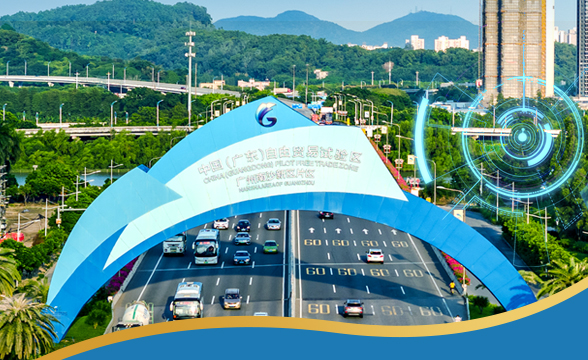Bay Area project may be held up as shining example
Daniel de Blocq van Scheltinga says Bay Area success may become a template for other regions on the Chinese mainland where similar city clusters can be developed
During the recent government-organized Symposium on the Outline Development Plan for the Guangdong-Hong Kong-Macao Greater Bay Area, our chief executive, her Macao counterpart, the governor of Guangdong province and senior representatives from the major Bay Area cities delivered speeches explaining the benefits of this plan, not only for the region, but for the country as a whole. Hong Kong was even referred to as the "Pearl of the Orient" by the deputy director of the office of the leading group for the development of the Bay Area, an honorific now rarely used and a throwback to travel posters from a bygone era to promote Hong Kong as a tourist destination.
Despite the reference to a time when things evolved at a slower pace, the urgency the central government attaches to the city cluster plan is unmistakable, and to Hong Kong's role therein. Only one week after the symposium, the same leading group announced eight policy measures, at the same time mentioning that these were only the "first batch". Later this year more measures will therefore be announced, as the various details are quickly and surely hammered out.
The announced measures addressed some of the immediate concerns that Hong Kong residents had when the plan was announced. They ensured the special and strong role that Hong Kong will have within the Bay Area.
A key measure is that for mainland income tax calculation purposes, (which is applicable if one spends more than 183 days per year on the mainland), any stay of less than 24 hours on the mainland will not count as a taxable day. For Hong Kong entrepreneurs who often move between Hong Kong and other Bay Area cities this is excellent news. With the new high-speed train connections it is already easier to operate within the Bay Area and return home to Hong Kong within 24 hours.
In conjunction with the existing high-speed train, the new measures also include immigration pilot schemes in the Bay Area, with a view to facilitate vehicles from Hong Kong entering and exiting mainland ports. This should also facilitate the use of the world's longest sea bridge, the recently opened Hong Kong-Zhuhai-Macao Bridge.
Another measure is applicable to high end talent and talent in short supply who when working in the mainland cities will receive tax subsidies from the municipal governments to offset the tax differential with Hong Kong.
The other measures include favorable elements such as encouraging the open recruitment of Hong Kong and Macao residents by public institutions and supporting the entrepreneurship and innovation by Hong Kong youth in the Bay Area. New career advancement opportunities for Hong Kong graduates have surely been significantly broadened by these generous opening-up and facilitating measures.
The private sector is already waking up to the fact that the Bay Area is an opportunity not to be missed. Very quickly off the mark, Sun Hung Kai Properties announced earlier this month that it had won a tender for a plot of land near Guangzhou's Qingsheng high-speed rail station, and that it will link this 750,000-square-foot commercial site with an adjacent commercial plot that it had acquired last May in order to build a transit-oriented development project. One day earlier the same property developer had already revealed its plan to double its portfolio of properties on the mainland to 25 million square feet by 2023. Clearly the Bay Area plan has been factored into Sun Hung Kai Properties' overall strategy and other major developers are certain to follow suit.
But it is still early days. If the initial response from the private sector is any indication, the Bay Area may turn out to be a template for other regions of China with similar ingredients in a city cluster each with their respective strengths which, when amalgamated into a coordinated whole, would validate the old adage first spoken of by the ancient Greek sage Aristotle: "The whole is greater than the sum of all parts." If China's track record on economic development is anything to go by, many other countries in the world would do well by monitoring the Bay Area's progress, learn from it and perhaps initiate their own bay area projects. Tokyo Bay Area and San Francisco Bay Area should be looking over their shoulders!
The author is an adviser on China-related matters to both the private and public sectors, and was the first non-Chinese CEO of a Chinese State-owned finance company.
(HK Edition 03/18/2019 page8)
All rights reserved. Presented by China Daily










